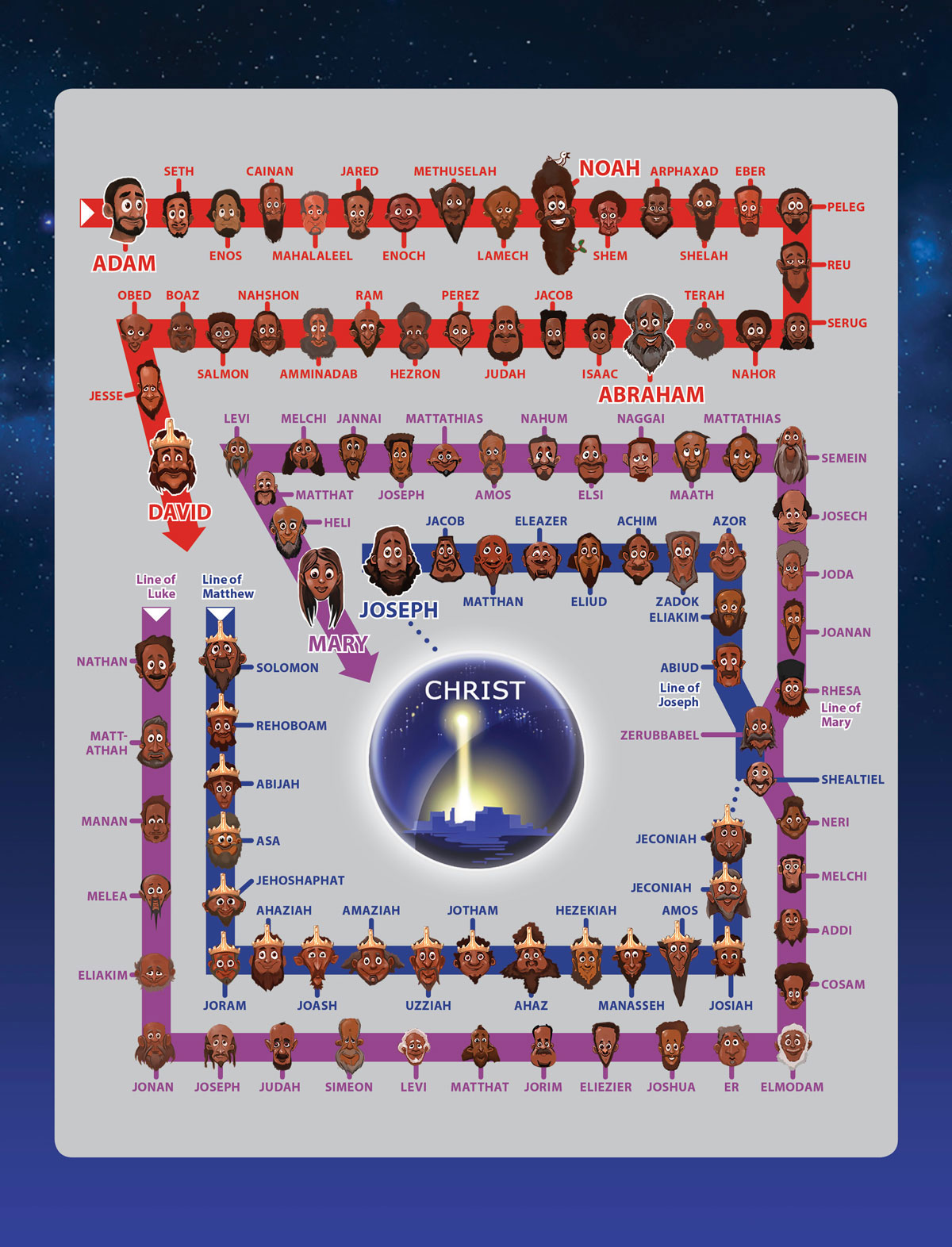The genealogy of Jesus is an important part of the Christmas story, often mentioned when reading about the birth of Jesus. It connects Jesus to the rich history of the Jewish people and highlights his lineage from Abraham and King David. The family tree of Jesus can be traced back through generations, and it holds significant meaning for Christians around the world.
The Genealogies of Jesus
 In the Bible, there are two genealogies of Jesus mentioned, one in the Gospel of Matthew and the other in the Gospel of Luke. These genealogies are slightly different, but their purpose is the same - to establish Jesus’ rightful place as the Messiah, the long-awaited Savior.
In the Bible, there are two genealogies of Jesus mentioned, one in the Gospel of Matthew and the other in the Gospel of Luke. These genealogies are slightly different, but their purpose is the same - to establish Jesus’ rightful place as the Messiah, the long-awaited Savior.
In Matthew’s account, the genealogy of Jesus begins with Abraham and lists the significant figures in the history of Israel, including King David and his son Solomon. The purpose of Matthew’s genealogy is to emphasize the royal lineage of Jesus, tracing him back to King David, who was promised an eternal throne.
On the other hand, Luke’s genealogy of Jesus starts with Adam, the first man, and goes through various patriarchs and kings of Israel. This genealogy highlights Jesus’ connection to all humanity, portraying him as the Savior not only for the Jewish people but for all people.
The Significance of the Genealogy
 The genealogy of Jesus carries immense significance for Christians as it demonstrates that Jesus is the fulfillment of Old Testament prophecies and the rightful heir to the throne of David. It establishes Jesus’ credibility as the Messiah and Son of God.
The genealogy of Jesus carries immense significance for Christians as it demonstrates that Jesus is the fulfillment of Old Testament prophecies and the rightful heir to the throne of David. It establishes Jesus’ credibility as the Messiah and Son of God.
By being born into a human lineage, Jesus could relate to the struggles and challenges of humanity. He became the bridge between God and man, offering salvation and eternal life to all who believe in him. The genealogy of Jesus emphasizes his divine purpose and the ultimate sacrifice he made for humanity’s salvation.
Understanding Jesus’ Family Tree
 Studying Jesus’ family tree provides insights into the cultural and historical context in which he was born. It highlights his connection to prominent figures of the Old Testament and helps us understand his role in fulfilling biblical prophecies.
Studying Jesus’ family tree provides insights into the cultural and historical context in which he was born. It highlights his connection to prominent figures of the Old Testament and helps us understand his role in fulfilling biblical prophecies.
One can trace Jesus’ lineage from Abraham, the father of the Jewish people, to King David, a revered figure in Israel’s history. This lineage is important because in Jewish tradition, the promised Messiah was expected to be a descendant of David. By fulfilling this requirement, Jesus establishes himself as the long-awaited Savior.
The genealogy of Jesus also includes notable women like Tamar, Rahab, Ruth, and Bathsheba. Their inclusion is significant as it breaks societal norms and displays Jesus’ inclusive nature, embracing people from different backgrounds and circumstances.
A Family Tree of Faith
 Looking at Jesus’ family tree, we see a lineage of faith. The individuals listed faced various trials and tribulations but held onto their faith in God. Their stories reveal God’s faithfulness and His plan to bring salvation to the world through Jesus.
Looking at Jesus’ family tree, we see a lineage of faith. The individuals listed faced various trials and tribulations but held onto their faith in God. Their stories reveal God’s faithfulness and His plan to bring salvation to the world through Jesus.
As Christians, we are part of this family tree of faith. Through Jesus, we have been grafted into the family of God, becoming sons and daughters of God. We are connected not only by blood but by the shared belief in Jesus as our Lord and Savior.
Conclusion
 The genealogy of Jesus paints a beautiful picture of God’s plan for salvation. It shows his divine purpose and the intricate details of his birth, connecting him to historical figures and important events. Understanding Jesus’ family tree helps us grasp the depth of his love and sacrifice.
The genealogy of Jesus paints a beautiful picture of God’s plan for salvation. It shows his divine purpose and the intricate details of his birth, connecting him to historical figures and important events. Understanding Jesus’ family tree helps us grasp the depth of his love and sacrifice.
As we celebrate Christmas, let us remember the significance of the genealogy of Jesus. It reminds us of the faithfulness of God throughout generations and the incredible gift we have received in Jesus. May this knowledge deepen our appreciation for the Christmas story and strengthen our faith in the one who came to save us.